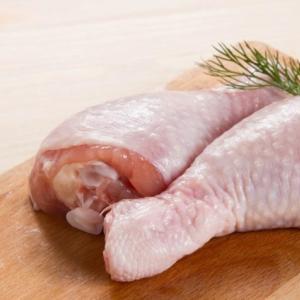DIY budgie house drawings. DIY nesting house for budgies. Store version: sizes and types
In nature, the female budgerigar does not build a nest herself from tree branches, but uses tree hollows, so at home you will have to take care of your parrots and their future chicks yourself. You can buy a nest box ready-made, order it from a carpenter you know, or make it yourself. More on this later
Nest for budgies: buy or make it yourself?
Before a pair of wavy birds gets ready to breed, you need to make a nest, it is also called a nesting house. This is an important stimulus for the female to lay eggs.
Nesting houses are usually divided into vertical (imagine a kind of narrow mini-birdhouse), horizontal (the principle is the same, only instead of height the house is stretched in width), and a mixed type (the so-called compromise house).
The mixed type combines sufficient width and a high entrance for the female (entry). Thus, in such a nest the disadvantages of the two previous types of nest are solved, and here:
- it is difficult for parrots to fall out or jump out in the first days of life, which means they will be healthier
- the female will not crush the chicks by flying into the house, since the entrance is high above the chicks
- due to its large width, the nesting area is spacious for the female and offspring
DIY house for budgies
If you are puzzled by the question of how to make a nest for budgies with your own hands, stock up on boards, a drill or screwdriver and self-tapping screws. Why exactly from boards?
Accordingly, if you make a nest out of plywood - the first time you pour boiling water on it and dry it out - it will be hopelessly damaged. Therefore, we make from boards, planed and tightly fitted to each other. Deciduous tree species, such as birch, are best.
Moreover, keep in mind that you will attach the nesting box to the cage, from the outside, with a hole into the cage - so that the bird can move directly from the cage to the nest. So there should also be attachments for attaching the house to the cage.

In order for a compromise house for budgerigars to be comfortable for the birds and offspring, you need to keep the dimensions approximately 22 by 15 cm, the diameter of the entrance is 4.5 cm, the height of the house is 20 cm. Plus a perch inside and outside below the entrance: no more than 3-4 cm inside nest and about 10 cm outside the nest.
The entrance is located on the top of the front side, closer to the corner. There is a lid on top that must be opened, otherwise you will not be able to care for the birds and clean your craft.
Inside the nest there should be a rounded depression in the floor 1-2 cm deep. It is not all the same depth, but gradually deepens and 1-2 cm is the depth in the deepest place. And in front of the entrance, inside it is better to make a step about 3 cm high and 7 cm wide. The step will help not crush the chicks, and over time will make it easier for them to leave the nest outside.
With a little patience, even a beginner can make a good nest for budgies with his own hands.
If done correctly, the nest box will serve you many times.
We are preparing a cozy nest for our pets. The owners of a single parrot are unlikely to be interested in the information presented below: in their case, we are not talking about the reproduction of birds. But if you have a couple of different sexes, then you can think about increasing the parrot family.
Under natural conditions, wavy birds do not build nests for themselves; looking for hollow trees, where they choose their nesting living space. But living in a cage, they do not have such an opportunity and during an important period of life they are left to the will of the owner.
As is already clear from the introduction, During nesting, birds need a safe and quiet corner, where the female can lay eggs and wait for the parrot's heirs to hatch.
And the owners have a choice: buy a ready-made nest (house) for this purpose at a pet store or make it themselves.
Store version: sizes and types
When going shopping, it’s a good idea to have an idea of what parrot nesting houses are like and their pros and cons. Pet stores offer three types of such nests:

The dimensions of the first type of nests are as follows: 25 cm in height, 20x20 cm in width. The entrance is located 3 cm from the upper edge, and its diameter is 4.5-5 cm.
Thanks to this height and, accordingly, the location of the entrance, it will be difficult for the chicks to get out of the nesting house ahead of schedule, and this is its advantage. But in other way, there is a risk that the female herself may accidentally damage the clutch, landing unsuccessfully. For the same purpose, the tap hole can be shifted slightly to the side.
The house also includes a special perch just below the entrance hole, extending about three centimeters into the house, which is designed to help the female sit more accurately on the clutch.
 Horizontal house. The horizontal house has the following parameters: height 15 cm and width 25×20.
Horizontal house. The horizontal house has the following parameters: height 15 cm and width 25×20.
At the same distance from the top as in the previous type, but also from the side wall, the taphole of the same diameter is located here.
This option assumes the opposite situation: the area of the bottom will not allow the parrot to damage the laid eggs when entering the house, but the chicks can easily get out of it.
In front of the entrance there is a perch that does not go inside. To make it more convenient for the female to get out of the nest/house and climb into it, a wooden plank is secured at the bottom with a small nail. Its dimensions: 15×10×5 cm.
It’s not for nothing that the third type is called a compromise: it combines the advantages of the first two. The dimensions of such a house are, respectively: 20 and 25×20 cm. Thanks to this area, the expectant mother can easily move around the nest, and the chicks, which are not yet fully formed, will not get out of the cage on their own. In addition, they are provided with sufficient space, which will save the latest hatched chicks from the risk of being crushed by their older brothers.
Such materials are treated with various chemicals and impregnated with glue, which is extremely harmful for the parrot family. And their temperature is too low for successful incubation and hatching of chicks.
Also, if you value the health and well-being of your pet, it is not recommended to make a nest for budgies from plastic bottles with your own hands.
How to make a nest at home
Having not found anything suitable for our pet in a pet store or on the market, we settled on the option of a do-it-yourself nest for budgies.
Prohibited materials for its manufacture are written a little higher. The most suitable are clean boards that have not been subjected to any chemical treatment.
Ready-made store houses have centimeter-thick walls. When making “self-tightening”, it is better to make both the walls and the roof two times thicker, and the floor in general three to four centimeters, so that a constant temperature and humidity are maintained in the nest.
Next, you need to decide which of the existing types of houses you would like to make. Having studied all the pros and cons, it is logical to settle on the third, compromise option as the most comfortable for the mother bird. Read below how to do it.

Ventilation of the house is required! Newborn chicks need an influx of fresh air.
- The assembled parts are fastened with glue, using nails or small self-tapping screws.
- A threshold is attached to the entrance.
- A perch is inserted under the inlet hole.
- A step is installed to protect the masonry from damage.
- Sawdust or small shavings are poured onto the bottom of the house in an approximately two-centimeter layer.
The sawdust must be from deciduous trees, since pine waste often contains fragments of resin, onto which an egg can stick to the feathers of a parrot, and she will accidentally take it out of the house and damage it. Experienced parrot owners recommend adding dry chamomile to the bedding material, literally a few spoons: it “works” as a disinfectant.

- For greater safety, so that the eggs do not roll out on the floor, such a nest is made in the bottom - a recess with a diameter of about 8 and a depth of 1.5-2 cm.
- The roof is placed on top.
- The lid is fixed so that it can be easily removed if it is necessary to clean the nesting house.
- Before installing the house, it is doused with boiling water to disinfect it.
- After this, rinse thoroughly with cold water and dry thoroughly.
- The edges of the house are checked for safety: they must be processed and cleaned extremely carefully; Carnations should not protrude.
- The structure is fixed to the wall outside or inside the cage. The last option is considered the most optimal.
- When fastening, use brackets or hooks placed on the upper edge of the nesting house.
When equipping a nest/house for your feathered pets, you must remember that adult wavy birds do not live in it permanently, but only during the nesting period. Therefore, toys, mirrors, lamps and other items of parrot leisure are inappropriate there.
The nesting house should be spacious: after all, in addition to the parent pair, if the breeding period is successfully completed, the family will increase significantly, and the chicks will live with their mother and father until a certain time.
Useful video
In contact with
How can you compare the joy that comes from communicating with your beloved pets? In what, even the most hardened heart, does not a thaw come when a little friend, who knows no lies and self-interest, demonstrates devoted love in all possible ways that he is capable of? House-trained birds are no exception, the most popular of which are cute, bright and very sociable budgies.
How to choose budgies for breeding?
Often, caring owners, trying to please their feathered pet, select a mate for it and immediately begin to dream of the appearance of healthy offspring in the near future. Of course, the goal is real, but achieving it requires some effort.
- There is no need to rush things and it is better to start by observing the selected couple. If budgerigars strive to constantly be close, pluck each other's feathers, coo and kiss, there is no doubt that they are in love. If it is noticeable that the birds tolerate each other indifferently or constantly quarrel, then it is better to try to find another partner. There is an opinion that sympathy more often occurs in budgies that have the same plumage colors or similar shades. For example, green and light green parrots get along easier than green and blue.
- It is not recommended to select a closely related pair of parrots, since as a result of such crossing there is a high probability of the appearance of chicks with congenital defects, developmental delays or their death in the egg.
- It must be remembered that budgerigars are ready for breeding at the age of at least one year. A young female that is not strong enough may die, not having enough strength to lay an egg. In favorable conditions, they are able to produce offspring up to 8-9 years of age.
- Budgerigars are capable of breeding offspring all year round, but it is better to give them this opportunity in the summer and early autumn, when the daylight hours are long enough and the birds’ immunity is strengthened with natural vitamins.
The main incentive that encourages budgerigars to reproduce is presence of a convenient nest, which the female is sure to like. Living in the wild, pairs make nests in tree hollows. For poultry, special houses are built, similar to birdhouses, trying to take into account as much as possible the nesting features of budgerigars in natural conditions.
Construction of a house for budgies
Materials
 Before choosing the material from which you plan to build a house that is comfortable enough for a couple of budgies, it would not be superfluous to carefully take a closer look at the features of the proposed options. Most popular use of plywood, sometimes chipboard is used.
Before choosing the material from which you plan to build a house that is comfortable enough for a couple of budgies, it would not be superfluous to carefully take a closer look at the features of the proposed options. Most popular use of plywood, sometimes chipboard is used.
Both materials contain chemical resins and adhesives that are harmful to any living organisms. If in plywood the emission of harmful fumes occurs along the ends of the material, then in chipboard - along the entire surface. Of course, it is a pity to subject tender, defenseless newborn chicks to brutal chemical attacks, so it is advisable to put the chipboard aside.
It is best to find several thin wooden boards; you can use lining, of course, not treated with Penotex or other paints and varnishes. If there is a choice then It is better to give preference to deciduous trees. Stores offer plastic houses. This option is also possible, but not as comfortable. We should not forget that animals and birds, including domestic ones, feel much more keenly than humans what is good for them and what is not.
Socket dimensions
 The size of the nest for budgerigars depends on where it is planned to be placed - inside the cage or outside, on the parameters of the cage and its location.
The size of the nest for budgerigars depends on where it is planned to be placed - inside the cage or outside, on the parameters of the cage and its location.
In this regard, three design options are usually offered:
- vertical - area 20 x 20 cm, height 25 cm;
- horizontal - area 25 x 20 cm, height 15 cm;
- compromise - area 22 x 20 cm, height 20 cm.
The expectant mother will happily agree to any of these options, but the first two have some inconveniences: when flying into a vertical house, the female parrot is in cramped conditions may damage the masonry with an awkward movement, and due to insufficient horizontal height, the chicks try to jump out ahead of schedule. The best option is a compromise, quite spacious and tall.
Letok
One of the most important elements of a nest for budgerigars is the entrance - a round hole with a diameter of 4.5 cm, usually located closer to the upper corner of the facade panel, at a distance of 3 cm from the top cover and 3 cm from the side edge. A little a small perch is attached below the entrance, indispensable for the convenience of the female’s penetration into the house. The length of the outside of the perch should be 10 cm, the inside of the perch should be 1.5 cm, so that the bird can carefully descend onto the clutch. Only if the house is low, then there should be no perch inside. In any case, it is good to attach a small board to the floor inside under the entrance, which, as a step, will help the bird get into the nest carefully and deftly.
Litter
D  but it is best to cover the house with a three-centimeter layer of fresh small shavings, preferably from hardwood; coniferous shavings can release resins, which, if they get on the egg, can stick to something and be damaged. For disinfection, it doesn’t hurt to add a little dried medicinal chamomile to it. It’s a good idea to carve a small depression in the floor, to prevent eggs from rolling all over the floor and the female could easily warm them all, because a budgerigar can have up to 10 of them in a clutch.
but it is best to cover the house with a three-centimeter layer of fresh small shavings, preferably from hardwood; coniferous shavings can release resins, which, if they get on the egg, can stick to something and be damaged. For disinfection, it doesn’t hurt to add a little dried medicinal chamomile to it. It’s a good idea to carve a small depression in the floor, to prevent eggs from rolling all over the floor and the female could easily warm them all, because a budgerigar can have up to 10 of them in a clutch.
Ventilation
The growing young generation, of course, needs an influx of fresh air, for which two or three holes with a diameter of 8-10 mm can be drilled in the upper part.
Lid
The lid of the house should be hinged or removable so that you can look inside from time to time and, if necessary, clean it.
Disinfection
 Before installing the finished nesting house, it should be scald completely with boiling water and disinfectants, then rinse again with boiling water and dry thoroughly.
Before installing the finished nesting house, it should be scald completely with boiling water and disinfectants, then rinse again with boiling water and dry thoroughly.
And so, when the crucial moment arrived: the proposed nesting house passed a strict test by the couple in love and the happy female began her important and responsible task of procreation, all that remained was to provide her with adequate nutrition. Along with grain feed, it is necessary to regularly feed a boiled egg, vegetables, fruits, herbs, and also mineral feed with a high calcium content.
And very soon, a bright, cheerful company of young parrots, leaving their cozy nest, will delight their loving parents and, of course, caring owners.
A nest for budgerigars is an important item on which the final breeding result of parrots depends. Not only its presence, but also the materials from which it is made, and its very appearance play an important role for birds.
We are talking about comfort, a sense of safety and environmental friendliness of the future “nurseries”.
To make a nest with your own hands, first, you need to find out what types of nesting houses are.
You can read more information about this in the article
Now let's look at the option of how to make a house with your own hands
We will build a compromise type nesting box, since it is the best option for the successful breeding of budgerigars.
Important points when building a nest for budgies with your own hands:
- all blanks must be made of natural wood (pine - provided that it is not a fresh tree, since resin vapors are dangerous for birds, deciduous trees: linden, birch, cherry, apple tree, rowan). High-quality plywood (minimum thickness 7 mm) - but only on the condition that it is not possible to obtain natural material.
If you are going to make a nest from plywood, the bottom must be made of wood.
Boards should be looked for in carpentry workshops; construction stores do not have suitable quality materials, as they are impregnated with glue and chemicals;
- internal dimensions of the walls of the house: depth - 25 cm, width 20 cm, height 20 cm (Fig. 1), wall thickness 1.5-2 cm, bottom - 3-4 cm;
- taphole diameter 50 mm;
- outer perch 12 cm, inner 2 cm;

- step-sill inside the nest: width 6 cm, height 3 cm, it is better to make the corner round for safety (Fig. 2).

If you make an internal perch the entire length of the house, there will be no need for a step.
- the hole at the bottom of the egg nest should have a soft transition deepened by 1.5-2 cm;

- a ventilation hole can be made by drilling 3-4 holes in the upper part of the back wall of the house at a distance of 3 cm from each other, with a diameter of 10 mm;
- to attach the nesting house to the cage, use hooks;
- there will be 6 blanks in total: 4 boards measuring 25 cm by 20 cm, 2 boards 20 cm by 20 cm;
- We fasten the walls with small nails and wood screws in 4 corners. Make sure that in no case do they stick out with their caps or sharp edges;
- You can make the lid hinged, half-opening, or simply sliding; do not rush to attach it, practice and understand how it will be more convenient for you while cleaning the nest. If you decide to make a double one, then nail the smaller part with nails, and “set” the larger part on the hinges;
The nest can be built according to the principle of a drawer. The removable part is the bottom to the step + back wall + inner side edges. This design makes cleaning the nest easier, especially if you make the removable part in duplicate. A quick replacement with a “fresh” pallet does not require waiting for the wood to dry after harvesting.
Photo of a nesting house with a retractable tray:

Also, there is another option for a “removable bottom”: it is cut out 0.5 cm smaller than the internal dimensions of the house, a recess for eggs is cut out in it, and you make a notch at the edge, which will make it easier to pull out the tray (it will be easier to pry it with your finger). For convenience, it is recommended to make two similar copies at once.

There are craftsmen who install lighting and a mini video camera inside the nest in order to disturb the young family less and be aware of what is happening inside.
It is not difficult to make a house for budgies with your own hands; most often it is more difficult to find materials for its creation. Well-dried natural wood without burrs, traces of pests and impregnation with chemicals is not often seen.
A natural, warm and cozy house for future chicks and their parents will serve you for many years and will help you raise healthy and strong feathered offspring. Convenience and its reliability guarantee you peace of mind for your wavy friends.
The opinions of most breeders are divided: some are sure that the nest should be purchased. Others advocate making it yourself. For those who decide to breed parrots, this question is relevant. A newly minted breeder decides to make a nest for parrots with his own hands. A laudable decision, where to start implementing it? Find the answer to this question in this material.
Before you start assembling the future “maternity hospital”, it is advisable to find out what types there are. There are three types of nesting houses for budgerigars. Horizontal, vertical and combined.
Horizontal house
Have you decided to make a horizontal nest for your budgerigar? Remember: you don’t have to work too hard to create it. Parrots will refuse to live in the nesting house. It is needed only for breeding offspring.
The main advantage of the horizontal monastery is its location. The width of the house allows the female to easily exit and enter it without damaging the clutch. The disadvantage of such a home for chicks is its entrance. Letok is a hole for entry and exit. It is located quite low, the chicks begin to crawl out of their shelter ahead of schedule.
Vertical house
Vertical houses for parrots are not the best choice. The chicks will not be able to leave the nest early. This is due to the high location of the taphole. The female, returning to it, can damage the clutch.

Compromise house
The best homemade nesting house for parrots. Why? Because it combines the best aspects of horizontal and vertical houses.

The width of the nest is wide. The female moves calmly in it, without the risk of damaging the clutch. The height of the entrance is optimal so that the chicks cannot leave the house ahead of time. The area of the nesting house allows the babies to grow up in comfortable conditions. They are not cramped; weak and small parrots do not risk being crushed.
How to make a house for budgies?
Beginners in breeding parrots have one very important question. How to make a nest for budgies at home? Is this possible, or is it easier to buy (order)?
If desired, everything is possible. You just need to remember that the baby’s home should be made of plywood or wood. Among parrot lovers there is an opinion that the nest can be built from chipboards. Experienced breeders categorically do not recommend doing this, citing the quality of the chipboard.

What is needed to make a house? Material, some tools and patience.
Material
How to make nests from the selected material? Everything is very simple. We cut out several boards, connect them together and secure them inside the cage. This explanation is completely incomprehensible.
It all starts with the choice of material. A wooden nest is the best. The material for it can be an unnecessary wooden box. There is no way to make a shelter out of wood? Then we'll replace it with plywood. We strongly recommend that you refrain from chipboard only.
Design
Before you start making a nest for budgies, you need to know its dimensions.
- The horizontal nesting house is 20 centimeters long. Width - 25 centimeters.
- The vertical nest has exactly opposite dimensions. Length - 25 centimeters, width - 20 centimeters.
- The width of the compromise house is 25*20 centimeters, the height is 20 centimeters.
The dimensions are known, you can start designing. It all starts with drawings of a home made for a budgie. A diagram of the future nest is made. They draw on a sheet of paper, then the details are cut out. And a house is made from them.
The following parts are cut from the selected material:
- Four walls.
- Roof.
They are all connected using nails. You can use self-tapping screws. The roof is secured in such a way that it can be opened in the future. This will make cleaning the nest very easy.
The tap hole is cut out. If you have made a vertical house, the entrance hole is located on its front wall. 5 centimeters retreat from the top edge. Cut a round hole with a diameter of about 4 centimeters. When building a horizontal house, 2 centimeters are retreated from the right wall and a tap hole is cut out.

Be sure to insert the perch into the nest. It is located under the entrance. It extends 3 centimeters into the house and protrudes 10 centimeters from the outside. The perch is fixed so that it does not swing from side to side when the bird lands.
How to make a nest for parrots if you have no experience in making it? It's okay, it's easier than it seems. Below is a detailed video describing the process.
Important! To prevent the chicks and the female from suffocating, small holes are made on the sides of the future abode for ventilation. Their diameter varies between 0.8-1 centimeters.
Tool
How to make nests for budgies? For this you will need:
- Self-tapping screws or nails.
- Hammer.
- Wooden perch.
- Cage mounts.
The process of making houses is described above. For those who require a video, please see the section below.
Video
It’s quite easy to build a nest for budgies with your own hands. But it’s one thing to explain how to do it. It’s quite another thing to show it clearly. Watch the video on how to create a nesting house. Everything is laid out in detail on it.
House from a pet store: pros and cons
It is much easier to buy a house for parrots at a pet store than to bother making one. So it seems. There are advantages to such a purchase: you don’t have to waste time and nerves on building your own home.
The purchased nesting house has much more disadvantages than advantages:
- The material from which it is made. This is chipboard, rarely plywood. There are wooden nests on sale, but their price range is high.
- The house is glued together. What is in the glue is known to the manufacturer. There is no guarantee that it is safe for the health of parrots.
- The thickness of the walls and floor of the house purchased at the pet store is 1 centimeter. Such a nest, especially one made of chipboard, is very cold.
Custom nesting house: pros and cons
If the owner of parrots has absolutely no time to figure out how nests are made, you can try making a custom-made house.
Advantages of this work:
- All client wishes are taken into account.
- Deadlines are discussed individually.
- Quality of work.
The disadvantages are the following:
- It's difficult to find a master.
- The required material may not be available. You'll have to buy it yourself.
- The production time is quite long.
- Cost of work.
When and where to place a nest?
As soon as the owner of the parrots notices that the couple is beginning mating games, you can think about a nesting house.
What are mating games? This is the period when the male is actively courting his girlfriend. She reciprocates his feelings. The birds pluck each other's feathers, chirp for a long time, as if talking, and kiss. Then the nest is placed in the cage. His female will immediately begin to settle down if she is ready to breed.

A breeding house for budgies is set up in two ways. Outside the cage or inside. The first is used in case of small cell sizes. The second option is the most optimal. The nest is attached to the rods. To place the nest inside the cage, it is desirable to have two doors. On one of them they attach the house. A homemade nest for budgies needs proper care.
Nest house care
Now everyone knows how to make a house for parrots with their own hands. How to care for your work of art and its inhabitants?
The cage with the nest is placed in a warm room. Budgerigars are afraid of drafts, and chicks even more so. The female and the baby should be protected from cold and noise. The less people visit the room in which the cage is located, the calmer it will be for the “young mother”. Otherwise, the parents are capable of abandoning the chicks.
Birds cannot tolerate tobacco smoke. Smoking is prohibited in an apartment where budgies live. At the time of their breeding, it is strictly prohibited.
Before placing the nest in the cage, it should be completely scalded with boiling water. Let dry or blow dry. Is the house completely dry? You can safely attach it to the cage.
There is no need to install any additional lamps in the socket. The female herself will warm the offspring. If the birds decide to breed in the cold season, then an ordinary table lamp is attached to the outside of the cage. It is useful for parents as a source of additional heat.
The nest must be cleaned every week. But how to do this when his parents actively protect him? They rush at the owner, scream threateningly and try to peck. In that case, leave them alone.

When the female and male are less aggressive, they allow the owner to access the nest. They do it reluctantly, but they endure. Then, letting the birds fly, they use this time to clean the nest. The babies are carefully removed, the old sawdust with droppings and other “joys” of parrot life are cleaned out. Fresh sawdust mixed with chamomile is poured in. The chicks are placed in the nest. All this needs to be done quickly so that the parents do not get agitated and attack the owner.
Attention! Have you noticed any droppings stuck to the chick's foot? Rinse it off gently with warm water.
Conclusion
Making a nest for budgies yourself is not that difficult. Try following the advice from the article. Happened? Subscribe in the comments. Share the material with your friends. Did you like the article? Write about it in the comments and share it on social networks.







